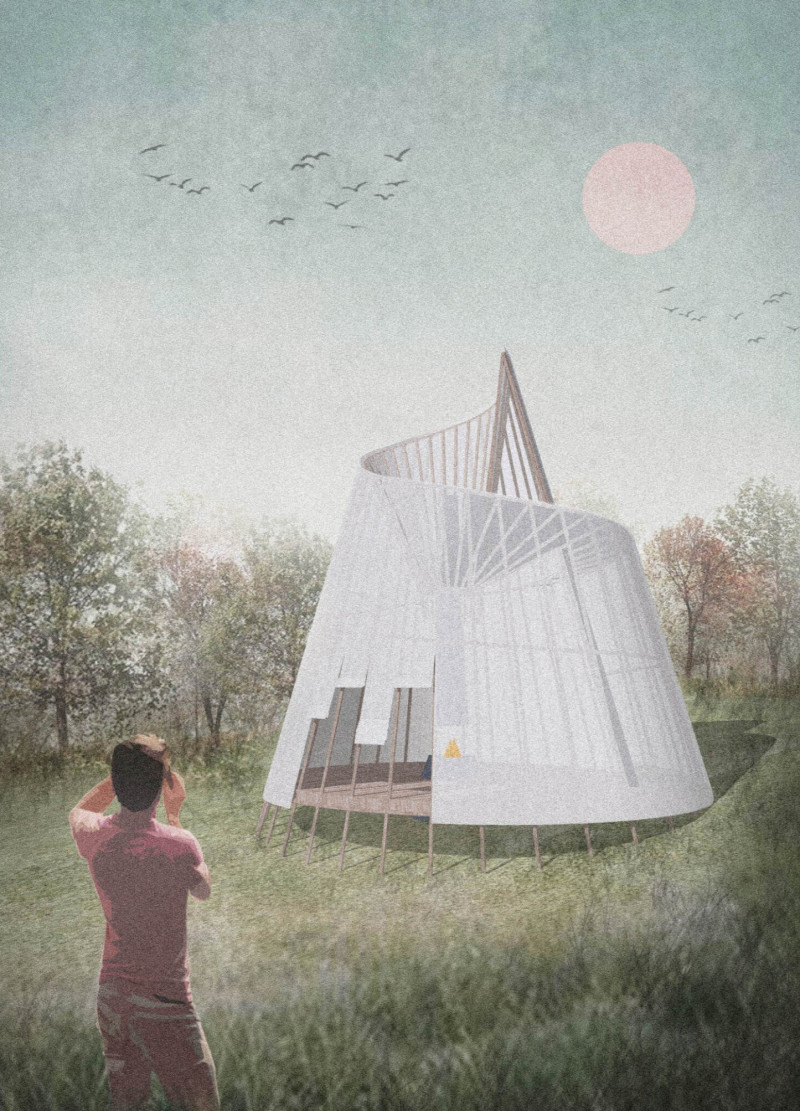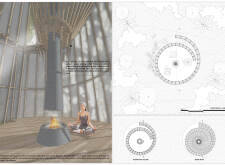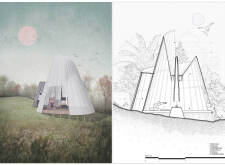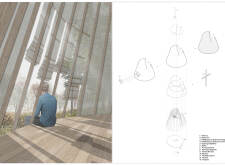5 key facts about this project
The Sensory Cabin is located in the picturesque landscape of New Zealand, designed as a peaceful space for meditation. Its purpose is to connect users with nature through a focus on the five senses: sight, hearing, smell, taste, and touch. The design concept is rooted in promoting mindfulness and encouraging self-reflection, allowing individuals to find solace from everyday stresses while immersing themselves in a calm natural environment.
Architectural Integration
The design of the cabin enhances the experience of meditation by integrating closely with the surrounding topography and ecosystems. Its layout facilitates engagement with the environment, offering views of native wildlife and lush vegetation. This connection promotes focus and tranquility, illustrating how a building can coexist harmoniously with the natural world.
Sensory Engagement
Acoustic design is essential for creating a calming atmosphere. Sounds from nature, such as birds singing and insects buzzing, flow into the cabin and enrich the experience. The cabin also captures pleasant scents from the fresh air and the local flora, enhancing users' connection to their surroundings. These sensory details create an immersive environment where meditation can thrive.
Sustainable Materials
The cabin shows a commitment to sustainability through the choice of materials. Timber is used for structural elements, providing strength while being renewable. Fabric is employed for protective coverings, allowing the design to adapt to varying weather conditions. This choice of materials helps reduce the environmental impact and aligns the project with ecological principles.
Cultural Context
Local heritage is reflected in the cabin’s design through the inclusion of traditional New Zealand Māori patterns, such as those found in wood-carved wind chimes. These features add character and meaning to the space, linking it to the cultural landscape.
The cabin’s geometric shape follows the natural contours of the land, allowing for ample daylight and creating a warm interior. The design offers a clear transition between indoor and outdoor spaces. This encourages users to feel wholly connected to nature, whether they are inside the cabin or stepping outside to meditate among the trees.






















































